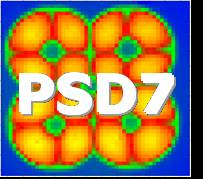Speaker
Prof.
Bo Cederwall
(Department of Physics, Royal Institute of Technology, Stockholm, Sweden)
Description
High-resolution gamma-ray detectors based on high-purity germanium (HPGe) are one
of the key workhorses of experimental nuclear science.The technical developments of
such detectors have been dramatic in recent years, from the emergence of large-
volume high-granularity electrically segmented HPGe detectors to position
sensitivity using pulse-shape analysis and the novel technique of gamma-ray
tracking.
Gamma-ray tracking takes advantage of the recent technological advances in the
electrical segmentation of Ge crystals and high-speed digital electronics. It is
now feasible to construct a 4π Ge detector array, consisting of 100 – 200 highly
segmented large Ge crystals, that combines high efficiency with high selectivity
even for high-multiplicity events. In a tracking array, pulse-shape analysis of the
signals from each segment will be used to reconstruct the energies and three-
dimensional positions of all gamma-ray interactions in the detector system. This
allows the scattering paths of multiple gamma rays from an event to be
disentangled. Gamma-ray tracking arrays, which are now being constructed in Europe
(AGATA) and in the United States (Gretina), promise an up to three orders of
magnitude gain in performance for nuclear spectroscopy and the possibility of a
significant advancement of the frontier of nuclear science.
The development of position sensitive semiconductor detectors, not only using Ge
but also, e.g., CdZnTe have been primarily driven by basic science but are now
finding applications in other fields such as in gamma-ray imaging for medicine,
industry, environment, public security, nuclear safeguards and non-proliferation,
etc. The combination of excellent energy resolution and position resolution make
such detectors highly interesting for, e.g., positron emission tomography (PET).
Furthermore, gamma-ray tracking enables to build collimator-free Compton imaging
instruments that can be used for single-photon emission computed tomography (SPECT)
and environmental surveying of gamma-emitting radioactive nuclides. The new
features of these detector systems, in particular their excellent energy and
position resolution and their resistance to large magnetic fields, will enable new
modalities and combinations of (multi-) modalities in medical imaging. Such include
the possibility of multi-line spect, and combinations of PET, SPECT and (nuclear)
magnetic resonance imaging.
Author
Prof.
Bo Cederwall
(Department of Physics, Royal Institute of Technology, Stockholm, Sweden)

